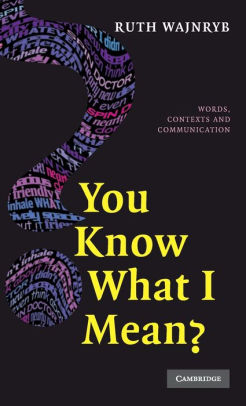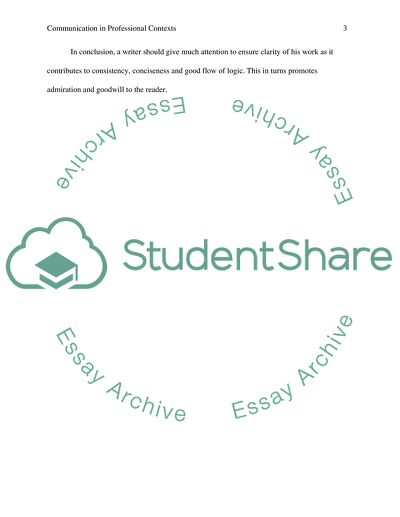1.2 The Communication Gift Process
by Olivia
Posted on 11-08-2020 02:12 AM

Culture and gifts communication mug communication gift of communication
0 comments
a day doesn’t go by when you aren’t constantly communicating. Whether it’s a coffee room conversation about your weekend, a quick update email to your team about a change in process, or a facebook status update celebrating the arrival of friday, we are sending messages.
 Sometimes those presents communication communication mugs gifts communication s are easy, they flow well and the messages land right where they were intended; and sometimes, they don’t hit the mark.
Sometimes those presents communication communication mugs gifts communication s are easy, they flow well and the messages land right where they were intended; and sometimes, they don’t hit the mark.
Communication begins with a source, which is a person, group, or organization that has a meaning it attempts to share. Encoding occurs on the sender side. It’s invisible process in which message is turned from thought to language.
Overview author bio the process of real-life communication is dynamic and complex. Learn why and how so many prominent gift of communication mug gifts communication presents communication theories do not square off well with the complexity of real-life communication, including the uncertainty reduction theory, the communication accommodation theory, the hyperpersonal perspective, the face negotiation theory, the speech codes theory, to name just a few.
A typical transmission path of a wireless communication system consists of encoder, encryption, modulation and multiplexing. The signal from the source is passed through a source encoder, which converts the signal in to a suitable form for applying signal processing techniques. The redundant information from signal is removed in this process in order to maximise the utilization of resources. This signal is then encrypted using an encryption standard so that the signal and the information is secured and doesn’t allow any unauthorised access.
Rhetorical Communication—The Written Form
There are two (2) major forms of communication – verbal and non-verbal communication. I.

Although written communication is not seen much today, it is essential when you have to fill up forms and write reports. Thus, saying that written communication is not important will not be correct. You need to be fluent in your written language too and must know how to interpret your thoughts into words clearly. In many organizations, managers and executives are required to write formal reports on topics ranging in varied industry segments. So, working upon your writing skills is equally important as verbal.
Different Effective Methods of Communication (Useful)
You may ask why it is important that we use different methods of communication in one organization. The answer is very simple. The reason for this is the pivotal role that communication plays in the effective functioning of a business. Imagine an organization today without e-mail facilities.

Top courses in Communication Skills
Kara’s class is another publisher on tpt with a lesson on effective communication skills. This lesson is much more direct and straightforward than the previous lesson. With the download, you receive a 16-slide powerpoint presentation to teach communication topics along with classroom activities related to those topics. Overall this lesson teaches students about:.
Communication Skills students also learn
Teaching generation y to adapt their communication style once they get into the workplace. This does not mean we all have to just text, e-mail or talk. We need to use mixed communication styles depending on who we want to communicate with. As a professional trainer for most of my career, i learned that i needed to adapt to the learning style of my clients or students. Similarly, if you want to be understood and get your message across, you need to adapt your communication style to the preferred method of the listener.
Using the modes in assessment to maximize learning, the three modes of communication must be considered as three parts of a single goal: communication. Keep the visual images of the naep and the wisconsin model in mind. It is possible to consider the modes separately, but their strength is in their interrelatedness. Keep in mind also, that assessing the interpretive, interpersonal and presentational modes in a standards-based integrated performance assessment occurs throughout the unit of instruction, not necessarily at the end of instruction. The building blocks of related grammar and vocabulary will be formatively assessed throughout the instructional unit providing feedback to both students and teachers about how well the students know and can use the target language.
Communication skills are not something that comes naturally to everyone. They have to be learnt and not by reading a book. The best ways of learning how to communicate effectively involves watching others, practicing receiving and giving feedback as well as role play. Most academic institutions offer some form of communications skills training for vets.
What is context and why does it matter?
If i could only tell you one reason why context matters, it would be the relationship created between the writer and the reader. Whether you’re writing fiction or non-fiction, context is a practical tool that will help you build meaning, trust, and interest for the reader. “content is king, but context is god. †— gary vaynerchuk.
What Is Interpersonal Communication?
The 3 modes are the 3 strands in the teks. No matter what the level of instruction - novice, intermediate, advanced, or superior - these strands are the same. Students will communicate in presentations, interpersonally, and interpretively at their appropriate level of proficiency. Interpersonal communication students engage in direct oral or written communication with others. Examples of this “two-way†communication.
Posted: february 14, 2014 in uncategorized intrapersonal communication refers to communicating with oneself, it involves internal reasoning. Intrapersonal communication helps us to think about our life course and why we do certain things in respect to our internal motivators (research) and ethics. Other instances where we experience interpersonal communication is when we think about different experiences we have been through, when we sift through ideas, interact with other people as we try to understand them and interpret their meaning (tubbs, moss & papastefanou, 2011:17).
Communication with oneself. Impression formation and decision making. Symbols and meaning, observations and attributions; ego involvement and persuasion. Self talk, visualization. Face-to-face communication. Relationship maintenance strategies; relational intimacy; relationship control; interpersonal attraction. More research. All traditions. Small group communication with a group of people. Gender and group leadership; group vulnerability; groups and stories; group decision making; task difficulty. At least 3 and less than seven.
Interpersonal and presentation writing rubric ​ interpersonal strategies interpersonal speaking: activities and assessments integrating interpersonal speaking into language instruction core practices: fostering interpersonal communication ​ interpretive strategies.
Interpersonal communication is a two-way means of communication that allows the participants to evaluate and respond to each other. For example, two people who are speaking and listening to each other, either in a face-to-face conversation or over the phone, are participating in interpersonal communication. When people converse with each other through letters, email, text messages, or conversations on social media, they are also using the interpersonal mode of communication.
There are three modes of communication, and you can assess your knowledge of them using the worksheet and quiz. The meaning of mode and interpersonal communication are some topics on the quiz.
One-Way and Two-Way Communication
Use a strong, confident speaking voice. Especially when presenting information to a few or a group of people, be sure to use a strong voice so that everyone can easily hear you. Be confident when speaking so that your ideas are clear and easy for others to understand. Use active listening. The other side of using verbal communication is intently listening to and hearing others. Active listening skills are key when conducting a meeting, presentation or even when participating in a one-on-one conversation. Doing so will help you grow as a communicator.
The most important element in stakeholder communications is identifying the target audience. Be deliberate and seek out input from all known groups to find the unknown groups. It can be tough when too late in the project a critical person or group is identified that has not received any of the communication through course of project and has valuable links that need to be addressed. So make sure you avoid this scenario and take all the steps early to create a document with all stakeholders you need to manage communication with. Once you have that the ways below can help you keep communication active, frequent and ongoing collaboration so there is strong support for you project.
By submitting this form, i give ourchurch. Com permission to send me communication by email. Last week i wrote a bit about what it means to inform people on their terms. In this day and age, we simply can’t assume and expect people to be always looking for or listening to our communications. People are constantly being bombarded with messages and have a natural tendency to skim and filter, sometimes missing important messages. They also have so many different choices in the ways, tools, or modes to use to communicate that it’s impossible to get a message to everyone using the same mode.
If you've ever experienced a parent arguing with their teenager, or a long-married couple conversing primarily with grunts and nods, you might agree with the adage that most human communication is not about what is actually being said. "ninety percent of what you're saying isn't coming out of your mouth," says will smith's character alex hitchens in the movie hitch (2005).
This example illustrates the fields and controls on the communication categories page. You can find definitions for the fields and controls later on this page. Note: communication categories are assigned to communication 3c groups on the communications 3c groups page for the purpose of limiting access to the communications associated with those categories. Therefore, make your communication categories.
Communication is a critical factor in project management. There are instances where projects have failed because of miscommunication and communication gaps. Project managers fill this gap by devising a good communication mechanism that will help him to communicate with the team members as well as stakeholders, sponsors, top-tier management and all the people who are connected to the project.
Alice marwick | november 16, 2013 | fall 2013 the internet is a bastion of folk culture. Insider slang, chain emails, and trendy videos fill inboxes and news feeds, circulating from user to user. If someone uploads a photo of her cat, another adds a poorly-spelled caption and posts it to a message board, and months (or years) later, someone else changes the caption, this string of reappropriated words and images is called a “meme,†in internet parlance. The term is vague enough to encompass such varied digital artifacts as beyonceÌ’s “single ladies†music video, collections of funny yearbook quotes, and animated gifs of a dancing hamster. Memes reveal much about what communications scholar henry jenkins refers to as the participatory culture of the internet, which is constantly in flux.
Verbal versus Non-verbal Communication
Verbal communication refers to the the form of communication in which message is transmitted verbally; communication is done by word of mouth and a piece of writing. Objective of every communication is to have people understand what we are trying to convey. In verbal communication remember the acronym kiss(keep it short and simple).
Communication The Key to Successful Project Management
In all elements of work life the most common complaint about an organisation is ‘lack of communication’.
have you ever felt the messages you convey are not communicated properly or have you ever felt guilty of not conveying the message as it wants to be conveyed? if so it is because of your weakness towards communication skills. Apart from the basic necessities, you need to be equipped with habits for good communication skills, as this is what will make you a happy and successful social being. In order to develop these habits, you need to first acknowledge the fact that communication skills need an improvement from time to time. The only constant in life is change, and the more you accept your strengths and work towards dealing with shortcomings, especially in the area of communication skills, the better will be your interactions and the more your social popularity. Thus the present unit enables you to get a detailed picture of the need and importance of developing communication skills and feel confident and empowering to face any type of situation in life.
Search
Categories
- Songwriter
- Resident Care
- Retirement
- Runner
- Sailor
- Helmsman
- Grammar Police
- Flight Attendant
- Fisher
- Entertainer
- Editor
- Daily Nutritinionist Facts
- Cyber Security
- Crusader
- Criminology
- Coworker
- Clinical Specialist
- Clinical
- Optometrist
- Logistician
- Magistrate
- Manicurist
- Marines
- Marketer
- Occupation
- Observer
- Officer
- Oncologist
- Painter
- Lifeguard
- Infopreneur
- Nanny
- Cartographer
- Expediter
- ESL Teacher
- Comedian
- Estimator
- Flagger
- Discjokey
- Driving
- Electrologist
- Fumigator
- Erector
- Driller
- Educator
- Dressmaker
- Forensic
- Legislator
- Harvester
- Cooker
- Inspector
- Hacker
- Civil Law
- Employer
- Enologist
- Endocrinologist
- Freelancer
- Enrobing
- Fabricator
- Forecaster
- Clown
- Criminologist
- Collector
- Docent
- Concierge
- Conservator
- Digger
- Dishwasher
- Drafter
- Donor
- Controller
- Communication
- Compounder
- Civil
- Clone
- Doctor
- Cinematographer
- Chiropractor
- Rugger
- Bailbondsman
- Jailer
- Deckhand
- Bellman
- Social Worker
- Babysitter
- Reporter
- Trainer
- Agent
- Embroiderer
- Sociologist
- Pharmacist
- Paramedic
- Insurance
- Teller
- Actuary
- Bailiff
- Coordinator
- Carpenter
- Cleaner
- Academic Dean
- Judge
- Boilermaker
- Clerk
- Apprentice
- Secretary
- Author
- Embalmer
- Hiker
- Cooking
- Deputy Sheriff
- Landscaper
- Photographer
- Pediatrician
- Pilot
- Teacher
- Archivist
- Toolmaker
- Singer
- Racer
- Accounting
- Mentor
- Vice President
- Detective
- Waiter
- Florist
- Broker
- Consultant
- Geographer
- Adjuster
- Auctioneer
- Researcher
- Cardiologist
- Marketing
- Interviewer
- Custodian
- Curator
- Caretaker
- Butcher
- Martial Arts
- Ghostbuster
- Mayor
- Machinist
- Innkeeper
- Mediator
- Conductor
- Demonstrator
- Programmer
- Cabinet Maker
- Planner
- Patient
- Copywriter
- Mechanic
- Surfer
- Employee
- Tour Guide
- Fisherman
- Surveyor
- Manager
- Supervisor
- Appraiser
- Police
- Filmmaker
- Woodworker
- Lecturer
- Inventor
- Liaison Officer
- Laborer
- Translator
- Janitor
- Tailor
- Debater
- Climber
- Politician
- Journalist
- Dietitian
- Firefighter
- Adjudicator
- Producer
- Housekeeper
- Entrepreneur
- Bartender
- Barista
- Hairstylist
- Banker
- Baker
- Electrician
- Therapist
- Astronaut
- Professor
- Architect
- Announcer
- Veterinarian
- Scientist
- Investigator
- Dispatcher
- Creative Writing
- Engineer
- Librarian
- Wanker
- Psychology
- Lieutenant
- Realtor
- Pastor
- Biker
- Nutrition
- Dancer
- Musician
- Gardener
- Farmer
- Counselor
- Boss
- Director
- Dentist
- Lawyer
- Nurse
- Accountant
- Coach
- Advisor
- Beekeeper
- Administrator